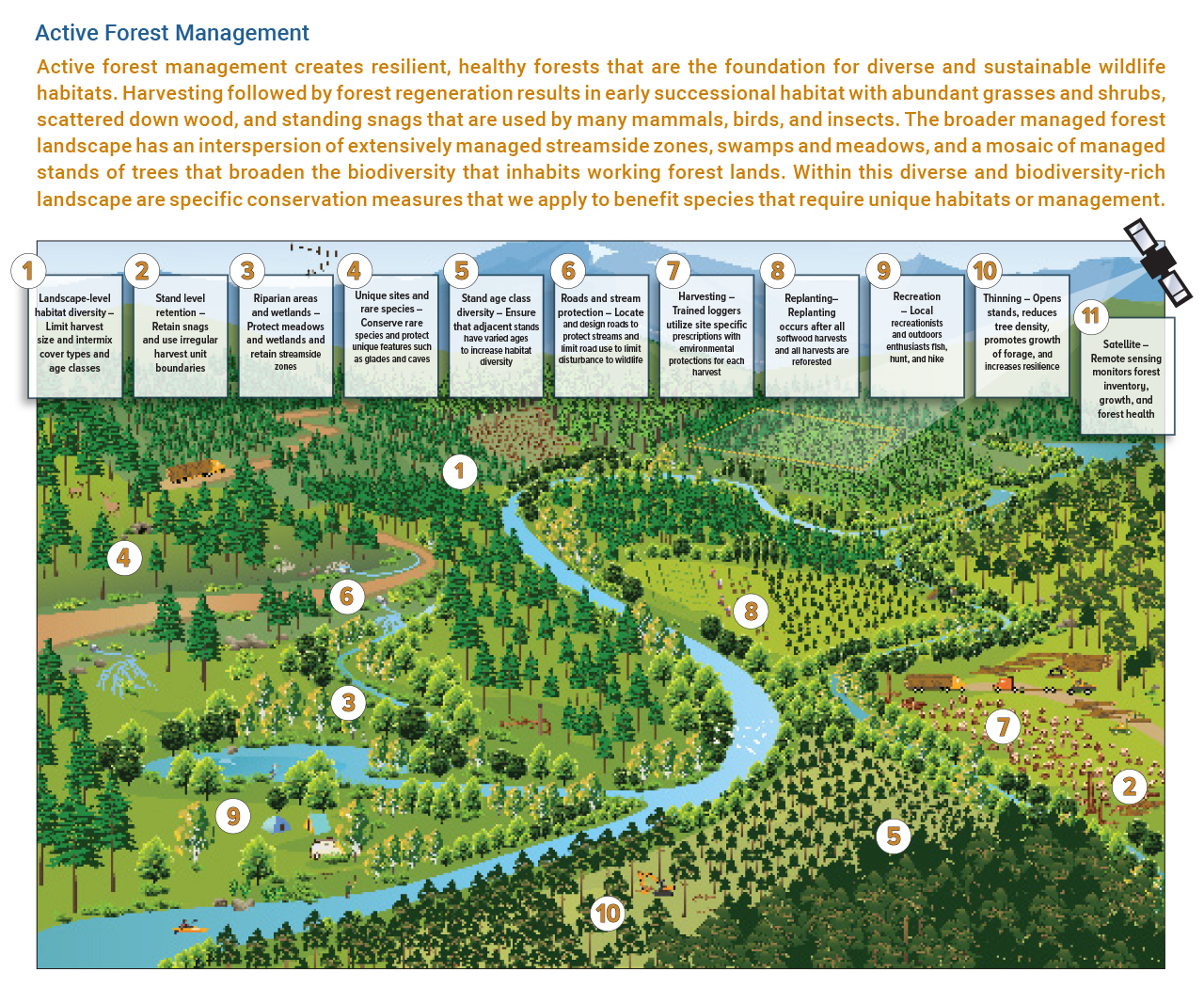Timberlands Biodiversity
NORTHAMPTON, MA / ACCESSWIRE / April 3, 2024 / PotlatchDeltic
Committed to Stewardship
Sustainably managed private working forests are healthy and resilient and provide forest habitat that supports a significant amount of the forest species. Our forest stewardship commitments include the responsibility to conserve wildlife species and their habitats.
CONSERVING BIODIVERSITY
Forests are diverse ecological systems with habitats for plants, animals, and organisms. Active forest management is a valuable tool for creating and maintaining a wide range of biodiversity benefits, enabling forests to stay healthy and productive. Across a landscape, a mosaic of forest ages from recently harvested to old-growth can be maintained - these forests in turn support long-term viability of wildlife species, plants, and biodiversity. At a broader scale, managed forests can provide habitat connectivity and help maintain and enlarge intact forested areas.
Markets for forest products provide an incentive to conserve forests as forests compared to alternative land uses that are not as beneficial to water quality, wildlife habitat, carbon sequestration and recreation. Healthy and vigorously managed forests are also less susceptible to catastrophic loss from insects, disease, and wildfire.
Our commitment to conserving biodiversity on our forest lands is based on this recognition that well-managed working forest lands provide a broad range of habitats for aquatic, avian, and terrestrial biodiversity. Four main components comprise our approach to maintaining and enhancing biodiversity: (1) landscape-level management; (2) stand-level diversity; (3) protection of ecologically unique sites or species; and (4) research.
We provide habitat diversity at the landscape level by utilizing stand size and age class adjacency restrictions for final harvest, identifying streamside management zones, maintaining a diversity of cover types, and replanting native species. The managed landscape provides a mixture of forest structure, age classes, and cover types, intermingled with less intensively managed riparian areas and embedded conservation of unique sites. Diverse working forest landscapes provide abundant habitat for large ungulates such as deer, elk and moose and a wide diversity of birds such as red-bellied woodpeckers, prairie warblers and wild turkeys.
We achieve stand-level diversity that enhances habitat for a variety of wildlife species through site-specific forest management including planning, implementation, and evaluation. Stand level diversity techniques include retaining unharvested areas, retention of den trees or snags, retention of slash piles, utilizing irregularly shaped openings, and protection of non-forested areas such as glades, meadows, and non-forested wetlands. We identify sites with species or communities that are unique, rare, or listed as federally threatened or endangered through exchange of data with state natural heritage programs, NatureServe, state wildlife agencies, and by internal discovery. Site locations are then mapped and included in our Land Resource Manager system. Foresters use this proprietary, real-time information when preparing detailed harvest plans to ensure these unique features are incorporated into our management plans. PotlatchDeltic has a long and continuing commitment to investing in and utilizing research to improve biodiversity conservation and environmental protection. We actively participate in and fund research with NCASI, universities, and fish and wildlife organizations to understand habitat and biodiversity response to forest management and then integrate research findings into our management. In addition, we actively advocate for laws and regulations that protect fish and wildlife and promote practical approaches that recognize the benefits of working forest lands.

View additional multimedia and more ESG storytelling from PotlatchDeltic on 3blmedia.com.
Contact Info:
Spokesperson: PotlatchDeltic
Website: https://www.3blmedia.com/profiles/potlatchdeltic
Email: info@3blmedia.com
SOURCE: PotlatchDeltic
View the original press release on accesswire.com







